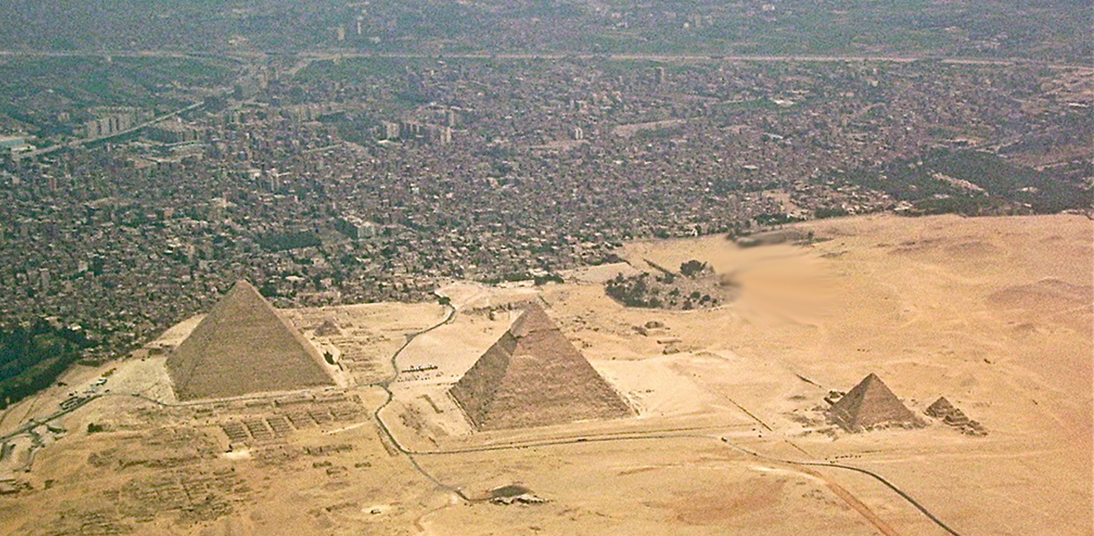

Ancient pyramids come in different shapes and sizes always starting with a square base rising level by level and made of stone. There are thousands of pyramids spread across the world following the same basic archetype in design. Some align to celestial bodies leading researchers to believe this may be the home of extraterrestrials who came to Earth in the beginning, and created humanity leaving pyramids and other enigmatic monuments as proof that they were here ... and as legends go they will one day return.
When we think of pyramids we think of ancient civilizations who were guided to built giant pyramid-shape for reason that vary, but generally link to god worship. It would appear that most ancient civilizations had megalithic builders who built great pyramids or mounds. The most famous are the Egyptian pyramids - huge pyramids built of brick or stone. Standard Archaeology claims that they were used as tombs for pharaohs, however their many surprising features have birthed many alternative theories, particularly since the great pyramids have never yielded a body.
The Great Pyramid of Giza is the largest pyramid in Egypt and one of the largest in the world. It is one of the Seven Wonders of the Ancient World, and the only one of the seven to survive into modern times. Ancient Egyptians sometimes capped the tops of their pyramids with gold and covered their faces with polished white limestone. Many of the stones used for the purpose have fallen or been removed for other structures over the millennia.
The putative inspirations for Egypt's pyramids are themselves a subject of ancient and ongoing debate, many remaining an enigma. Some Egyptologists have seen King Zoser's Step Pyramid as a symbolic representation of ancient Egypt's stratified society. The pyramid and obelisk would have been inspired by previously overlooked astronomical phenomena connected with sunrise and sunset: the zodiacal light and Sun pillars, respectively.
To the south of Egypt the Nubians also built pyramids. They built many more pyramids than the Egyptians, but are smaller. The Nubian pyramids were constructed at a much steeper angle than Egyptian ones and were not tombs, but monuments to dead kings. Pyramids were built in Nubia up until the AD 300s.
The Mesopotamians also built step pyramids, or ziggurats. In ancient times these were brightly painted. Since they were constructed of mud-brick, little remains of them. The biblical Tower of Babel is believed to have been a Babylonian ziggurat.
A number of Mesoamerican cultures also built pyramid-shaped structures. Mesoamerican pyramids were usually stepped, with temples on top, more similar to the Mesopotamian ziggurat than the Egyptian pyramid. The largest pyramid by volume is the Great Pyramid of Cholula, in the Mexican state of Puebla. This pyramid is also considered the largest monument ever constructed anywhere in the world, but it is still being excavated. There is an unusual pyramid with a circular plan at the site of Cuilcuilco, now inside Mexico City and mostly covered with lava from an ancient eruption of Xictli. Pyramids in Mexico were often used as places of sacrifice. There are pyramid-shaped ancient monuments found in parts of Georgia.
Pyramids have occasionally been used in Christian architecture of the feudal era, e.g. as the tower of Oviedo's Gothic Cathedral of San Salvador. In some cases this leads tomasonic or other symbolical intentions.
An example of a modern pyramid can be found in Paris, France, in front of the Louvre Museum. The Louvre Pyramid is a 20.6 meter (about 70 feet) glass structure which acts as an entrance to the museum. It was designed by the American architect I. M. Pei and completed in 1989.
The Transamerica Pyramid in Downtown San Francisco, California.
The 32-story Pyramid Arena in Memphis, Tennessee (built in 1991) was the home court for the University of Memphis men's basketball program, and the National Basketball Association's Memphis Grizzlies until 2004.
The Walter Pyramid, home of the basketball and volleyball teams of the California State University, Long Beach, campus in California, United States, is an 18-story-tall blue pyramid.
The Luxor Hotel in Las Vegas, United States, is a 30-story pyramid.
The Summum Pyramid, a 3 story pyramid in Salt Lake City, Utah, used for instruction in the Summum philosophy and conducting rites associated with Modern Mummification.